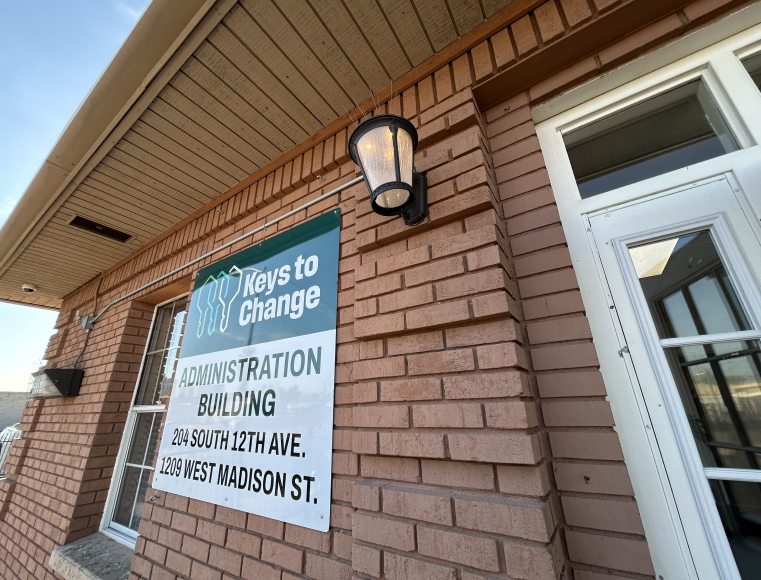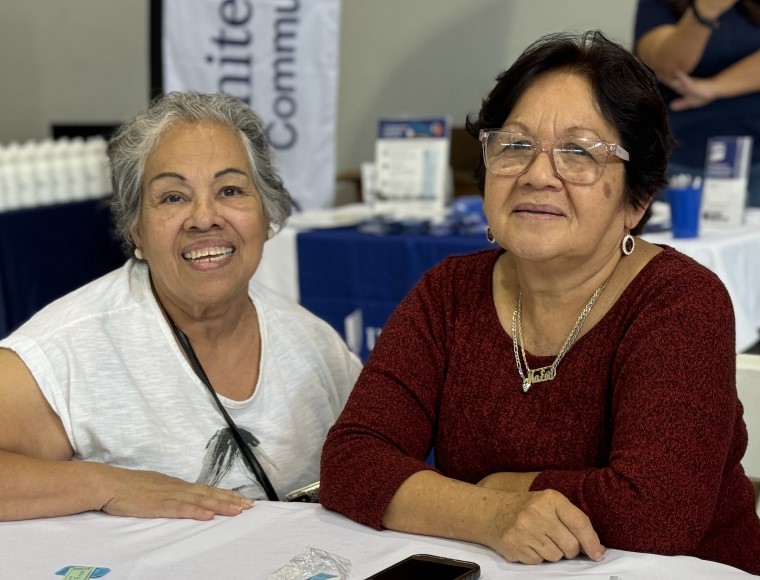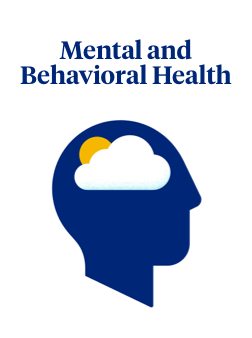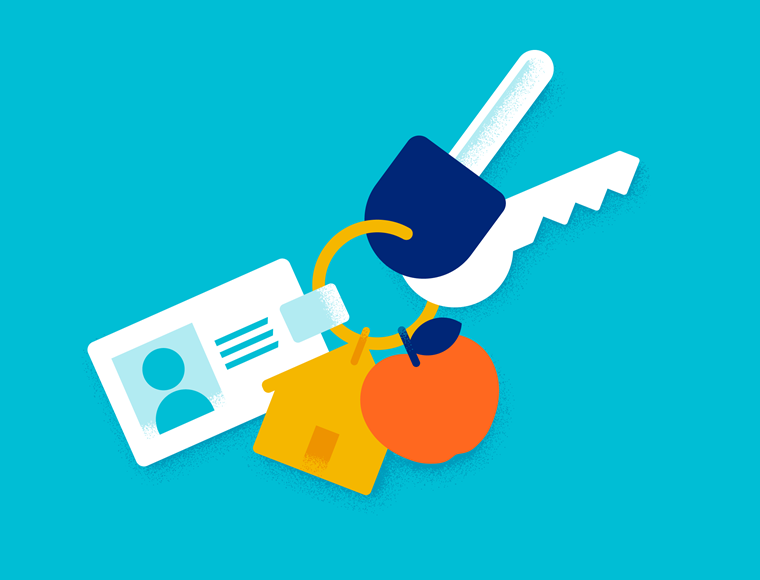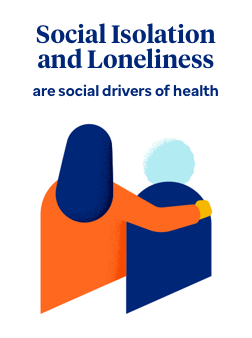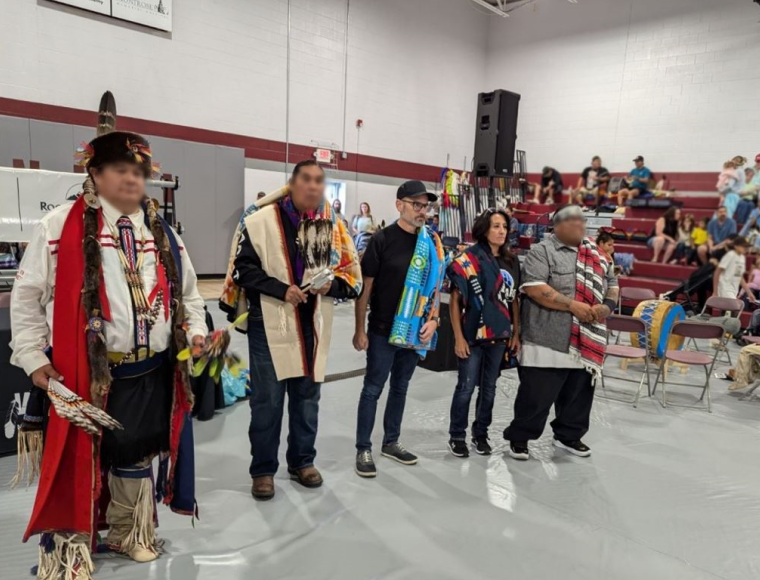We all feel alone from time to time, but social isolation and loneliness (SIL) are much more than a fleeting emotion. Loneliness is a subjective unpleasant or distressing feeling of isolation. A perceived discrepancy between one’s actual and desired level of social connection. Social isolation is having objectively few social relationships, social roles, group memberships and infrequent social interactions. Both have been linked to poor health outcomes.
People who experience social isolation or loneliness have higher risks of morbidity and mortality, cardiovascular disease, stroke, immune system disorders, respiratory illness and type 2 diabetes.1,2,3,4 They also have an increased risk of mental and cognitive health conditions including depression, anxiety, suicide, addiction, cognitive decline, dementia, and Alzheimer’s disease.
Older adults, BIPOC, LGBTQIA+, youth (in particular Gen Z), military and veterans, caregivers, new mothers and those with disabilities are at the greatest risk of social isolation or loneliness.5 A pilot program conducted in Colorado with UnitedHealthcare’s Rocky Mountain Health Plans also found that social isolation and loneliness were correlated to other social drivers of health such as housing instability, food insecurity and others.
Rocky Mountain Health Plans launches Social Needs Screening Tool
With the funding from an Accountable Health Communities Model (AHCM) through the Center for Medicare & Medicaid Innovation (CMMI), Rocky Mountain Health Plans screened more than 50,000 members who were dually eligible. Individuals were given the Accountable Health Communities Health-Related Social Needs Screening Tool at participating clinics between October 2018 and March 2022.
The screening tool is designed to identify patients’ needs in five core domains related to SDOH. It is an evidence-based approach that identifies gaps and promotes collaboration between clinical care and community services to address the needs of patients. The tool included questions related to housing instability, food insecurity, transportation issues, utility help needs and interpersonal safety. Supplemental questions related to social isolation and loneliness were also included.
The connection between SIL and SDOH
Of the unduplicated individuals screened, 14% appeared to be experiencing social isolation and/or loneliness. Most respondents in this group were young, low-income, working-age adults with a low socioeconomic status. Most of these individuals were also BIPOC.
Furthermore, the screening tool revealed that social isolation and loneliness were predictive of every other SDOH-related need on the screening tool. It also increased the risk of each by 200 to 750% relative to the general population. Individuals experiencing social isolation and loneliness were 1700% more likely to also screen positive for interpersonal violence-related needs.
Opening health care professionals’ eyes
Health care providers who do not address social isolation and/or loneliness in their patients may underestimate their impact on physical health. Considering just physical factors in treatment plans can reduce their effectiveness and lead to additional health care costs.
The findings allowed health care professionals to better understand the population they were serving. Some providers who were interviewed reported being surprised that certain individuals were experiencing social isolation or loneliness and that they wouldn’t have known it, if not for the screening.
Using information from the tool, health care providers can more effectively support high-risk patients and ensure that all needs are being met with treatment plans. As the data showed, these patients were often from marginalized communities and providing them with care for social isolation and loneliness can promote more equitable care and reduce disparities.
Using the screening tool in practice
Using this tool helps health care professionals understand their patients’ health concerns and priorities more completely. Knowing the demographics of individuals who are likely to experience social isolation or loneliness can also prompt providers to offer the tool to more candidates.
In the pilot program with the Rocky Mountain Health Plans, health care professionals began devising multi-impact treatment plans that holistically addressed both social isolation and loneliness as well as other SDOH needs.
Data collected through the screening program also found a correlation between social isolation or loneliness and increased emergency department (ED) usage. An intervention that offered care navigation to socially isolated and lonely individuals and helped them connect to resources from their holistic and preventive treatment plan reduced ED utilization by 41%.
Addressing patients’ social needs is directly linked to improved health outcomes, reduced costs and higher satisfaction. Whole person care improves an individual’s relationships. The screening tool has shown to be a valuable input in the quest for holistic care.
Sources
- House JS, Landis KR, and Umberson D. Social relationships and health. Science 241: 540–545, 1988
- Valtorta NK, Kanaan M, Gilbody S, Ronzi S, and Hanratty B. Loneliness and social isolation as risk factors for coronary heart disease and stroke: Systematic review and meta-analysis of longitudinal observational studies. Heart 102: 1009–1016, 2016
- Bu F, Philip K, Fancourt D. Social isolation and loneliness as risk factors for hospital admissions for respiratory disease among older adults. Thorax 2020;75:597-599.
- Brinkhues S, Dukers-Muijrers NHTM, Hoebe CJPA et al. Socially isolated individuals are more prone to have newly diagnosed and prevalent type 2 diabetes mellitus - the Maastricht study –. BMC Public Health 17, 955 (2017). https://doi.org/10.1186/s12889-017-4948-6
- National Academies of Sciences, Engineering, and Medicine 2020. Social Isolation and Loneliness in Older Adults: Opportunities for the Health Care System. Washington, DC: The National Academies Press. https://doi.org/10.17226/25663.



